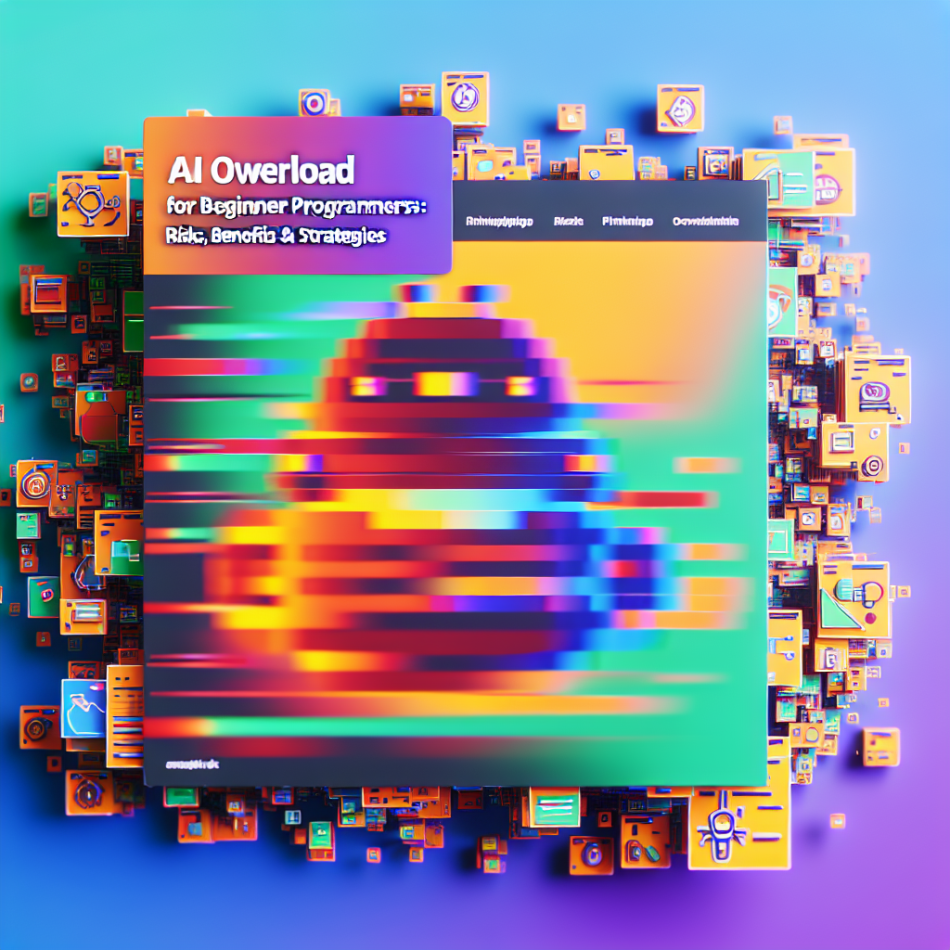Navigating AI Overload: Risks, Benefits, and Strategies for Beginner Programmers
As artificial intelligence (AI) tools become integral to programming, beginners face a paradox: while AI accelerates learning and problem-solving, over-reliance risks stunting foundational skills. This article explores the dual-edged nature of AI in coding, examining its potential to streamline workflows versus its capacity to create dependency. We’ll discuss actionable strategies to harness AI effectively, ensuring it enhances—rather than hinders—your growth as a programmer.
Understanding AI Overload in Programming
AI overload occurs when beginners rely excessively on tools like code generators, debuggers, or chatbots, leading to cognitive saturation. These tools promise instant solutions, but without a structured approach, they can overwhelm users with fragmented information. For instance, AI might generate code snippets without explaining underlying principles, leaving learners unable to troubleshoot errors independently. This creates a cycle where programmers prioritise speed over comprehension, undermining their ability to think critically.
The Risks of Over-Reliance on AI Tools
While AI simplifies tasks, dependency carries significant pitfalls:
- Skill stagnation: Automating code writing or debugging may reduce opportunities to practise core programming logic, syntax, and problem-solving techniques.
- False confidence: AI-generated code isn’t flawless. Beginners might overlook errors or security vulnerabilities, assuming tools produce perfect outputs.
- Ethical concerns: Overusing AI-generated code without understanding its origins risks plagiarism or violating licensing terms, especially with open-source dependencies.
- Reduced creativity: Relying on predefined AI solutions can limit experimentation, discouraging innovative approaches to coding challenges.
These risks highlight the importance of balancing AI assistance with manual practice to build resilient programming skills.
The Benefits of AI for Beginner Programmers
When used mindfully, AI offers transformative advantages:
- Accelerated learning: AI-powered platforms like interactive tutorials or real-time feedback systems personalise learning paths, helping novices grasp complex concepts faster.
- Efficiency in debugging: Tools such as AI-driven linters or error analysers pinpoint issues in code, saving hours of manual troubleshooting.
- Exposure to best practices: AI can suggest optimised code structures, introducing beginners to industry standards and efficient coding patterns.
- Accessibility: For non-native English speakers or those with learning differences, AI explanations and code comments bridge comprehension gaps.
By leveraging these benefits, beginners can build a robust foundation while minimising frustration during the early stages of their programming journey.
Striking the Right Balance: Maximising AI’s Potential
To avoid overload while capitalising on AI’s strengths, adopt these strategies:
- Set clear boundaries: Use AI for repetitive tasks (e.g., boilerplate code) or concept clarification, but manually write code for projects central to your learning goals.
- Analyse, don’t copy: When AI generates code, dissect it line by line. Ask questions like, “Why did the tool use this loop structure?” or “How does this function handle edge cases?”
- Combine AI with traditional resources: Pair AI tools with textbooks, documentation, and peer discussions to reinforce understanding from multiple angles.
- Regularly test your knowledge: Periodically disable AI assistance to assess your skills. Identify gaps and revisit foundational topics as needed.
This balanced approach ensures AI acts as a mentor, not a crutch, fostering both competence and confidence.
Ethical and Practical Considerations for AI Adoption
Beyond skill development, responsible AI use involves ethical awareness. Beginners should:
- Verify licensing terms for AI-generated code, especially when integrating third-party libraries.
- Avoid sharing sensitive data with public AI platforms, as inputs may be stored or used to train models.
- Cross-check AI recommendations against trusted sources to prevent propagating biases or inaccuracies embedded in training data.
Additionally, recognise that AI tools evolve rapidly. Staying informed about updates—and their implications—ensures your practices remain relevant and secure.
Conclusion: Embracing AI as a Collaborative Partner
AI is reshaping programming education, offering unparalleled support for beginners. However, its value hinges on mindful usage. By understanding the risks of overload, capitalising on efficiency gains, and maintaining hands-on practice, programmers can cultivate a symbiotic relationship with AI. Strive to treat AI as a collaborative partner—one that complements your curiosity and effort—rather than a shortcut. In doing so, you’ll build not just technical proficiency, but the adaptability needed to thrive in an AI-driven tech landscape.
